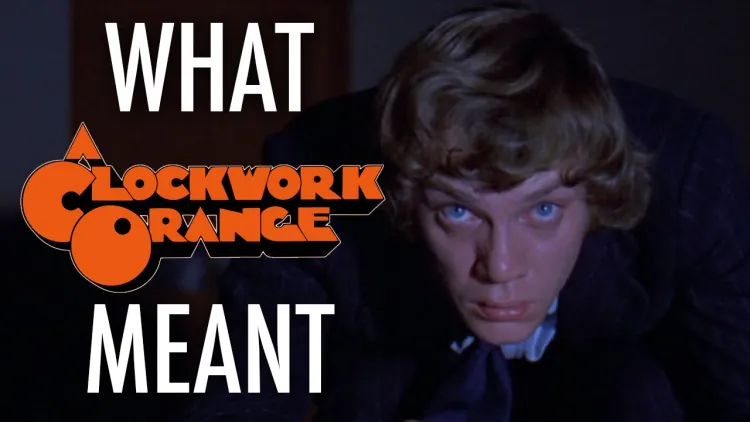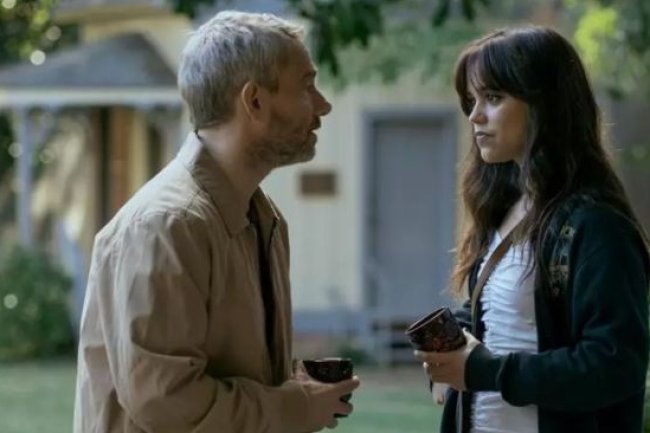A Clockwork Orange: Exploring Kubrick's Dystopian Masterpiece
Discover how the film challenges ideas about free will, violence, and societal control, and learn about its lasting influence on cinema and culture.

A Clockwork Orange: A Cinematic Exploration of Free Will and Control
Stanley Kubrick's A Clockwork Orange (1971) remains one of the most provocative and influential films in cinematic history. Based on Anthony Burgess's 1962 novel of the same name, the film explores themes of free will, control, and the nature of violence through the lens of a dystopian future. This article delves into the creation, themes, and lasting impact of A Clockwork Orange.
The Making of A Clockwork Orange
Kubrick's Vision
Stanley Kubrick, known for his meticulous and often controversial filmmaking style, was drawn to Burgess's novel for its exploration of complex social and psychological issues. Kubrick's adaptation remains largely faithful to the source material, yet his visual and directorial choices brought a new level of intensity and artistry to the story.
Casting and Performance
Malcolm McDowell's portrayal of the protagonist, Alex DeLarge, is central to the film's impact. McDowell's performance, blending charm with menace, captures the duality of Alex's character—a charismatic yet sadistic delinquent. His depiction of Alex's journey from a free-willed criminal to a state-controlled pawn is both disturbing and compelling.
Visual and Aesthetic Style
Kubrick's distinct visual style is evident throughout A Clockwork Orange. The use of wide-angle lenses, symmetrical compositions, and bold color schemes create a surreal and unsettling atmosphere. The film's iconic scenes, such as Alex and his "droogs" committing acts of violence to the tune of classical music, juxtapose beauty and brutality in a way that challenges and provokes the audience.
Themes and Analysis
Free Will and Control
At its core, A Clockwork Orange is an exploration of free will versus state control. Alex's journey questions whether it's better to choose evil freely than to be forced into goodness. The Ludovico Technique, a state-imposed behavioral modification procedure, strips Alex of his ability to choose, turning him into a "clockwork orange"—organic on the outside, mechanical on the inside.
The Nature of Violence
The film doesn't shy away from depicting violence, using it to provoke thought about its nature and impact. By presenting violence in a stylized and almost operatic manner, Kubrick forces viewers to confront their own reactions and desensitization to brutality. This approach underscores the film's critique of both societal violence and the state's violent control mechanisms.
Youth and Rebellion
- A Clockwork Orange* also delves into themes of youth rebellion and the societal response to it. Alex and his droogs represent a generation disconnected from societal norms, acting out in ways that reflect deeper issues of alienation and disillusionment. The film questions the effectiveness and morality of using authoritarian measures to control youth behavior.
Controversy and Censorship
Initial Reception
Upon its release, A Clockwork Orange was met with a mix of acclaim and outrage. Critics praised its bold direction and thematic depth, while others condemned its explicit content and perceived glorification of violence. The film's graphic scenes led to calls for censorship and even accusations that it inspired copycat crimes.
Kubrick's Withdrawal
In response to the controversy and reported incidents of violence, Kubrick made the rare decision to withdraw the film from circulation in the United Kingdom. It remained unavailable there for nearly three decades until its re-release in 2000, a year after Kubrick's death.
Legacy and Influence
Cultural Impact
Despite—or perhaps because of—its controversy, A Clockwork Orange has left an indelible mark on popular culture. Its influence is evident in music, fashion, and other films. The film's imagery, particularly Alex's distinctive costume and the use of Beethoven's music, has become iconic.
Academic and Critical Analysis
- A Clockwork Orange* continues to be a subject of academic study and critical analysis. Its exploration of philosophical and ethical questions ensures its place in discussions about film, society, and human behavior. The film's ability to provoke thought and debate keeps it relevant decades after its release.
Technological and Stylistic Influence
Kubrick's technical and stylistic innovations in A Clockwork Orange have inspired filmmakers across genres. His use of music, innovative cinematography, and bold narrative choices set new standards for what cinema could achieve, influencing directors from Martin Scorsese to Quentin Tarantino.
Conclusion
- A Clockwork Orange* is more than just a film; it's a cinematic experience that challenges viewers to think deeply about free will, violence, and the role of society in shaping human behavior. Stanley Kubrick's masterful direction, combined with Malcolm McDowell's unforgettable performance, creates a work that is as thought-provoking as it is visually striking. As a piece of cultural and cinematic history, A Clockwork Orange remains a powerful testament to the enduring power of film to explore and question the human condition.
What's Your Reaction?






















